Sign up for the Starts With a Bang newsletter
Travel the universe with Dr. Ethan Siegel as he answers the biggest questions of all.
The Moon is Earth’s brightest, largest night sky object.
Animation showing the umbral phase of the November 19, 2021 partial lunar eclipse. At 9:03 AM UT, maximum eclipse was reached, where only 0.9% of the Moon remains illuminated by direct sunlight. The umbral phase lasted over 3.5 hours: the longest partial eclipse of the 21st century. Reconstructing the size of Earth’s shadow relative to the physical size of the Moon is the oldest method for measuring both the size of the Moon as well as the distance to it: a method first leveraged by Aristarchus back in the 3rd Century BCE.
It exhibits phases,
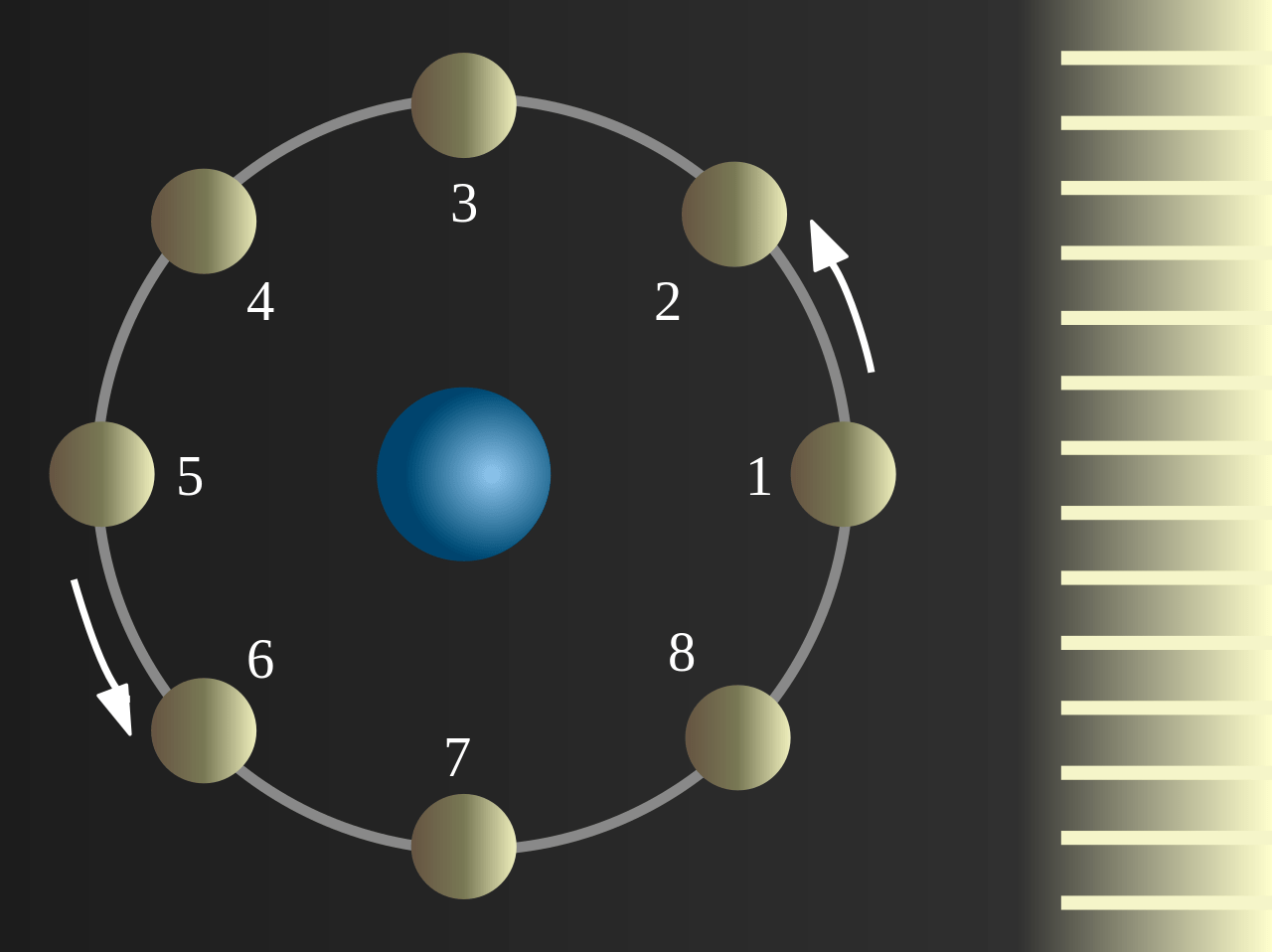
Although one half of the Moon, only, is ever illuminated by the Sun, both the portion of the Moon that’s illuminated by the Sun and the illuminated portion that’s visible from Earth change over the course of a lunar month. A complete cycle, from new phase to new phase, defines the length of a lunar month.
large apparent motions,
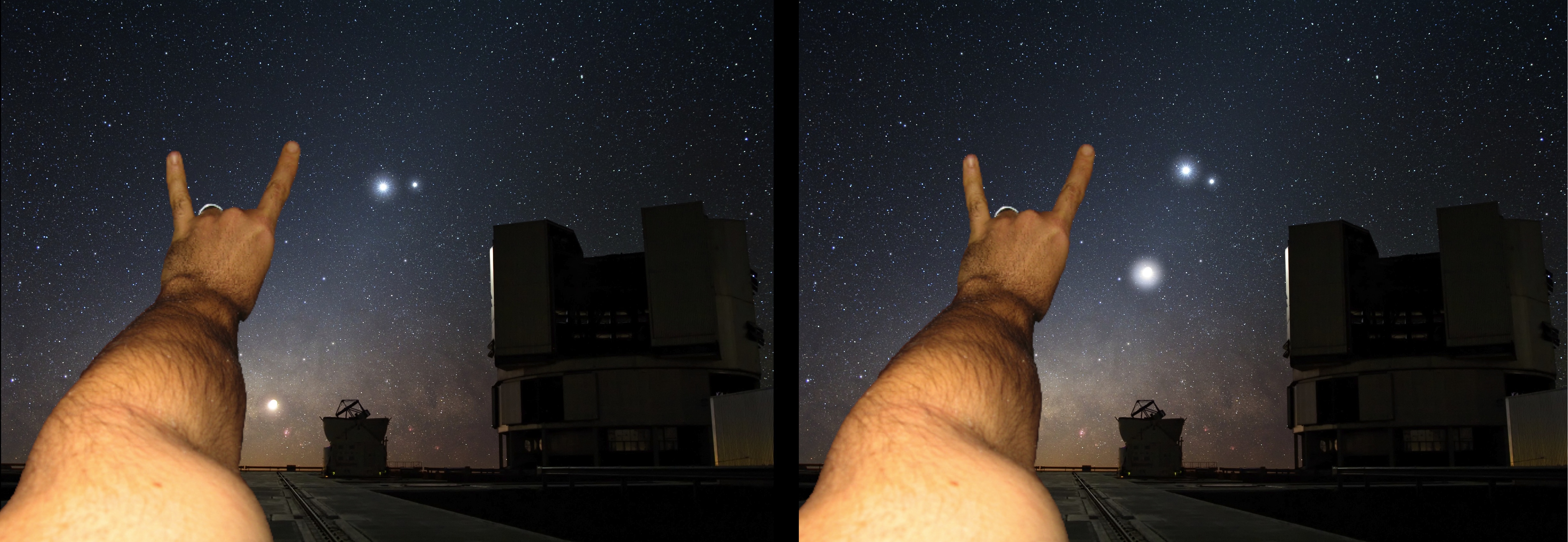
This two-panel view shows a human hand with outstretched index and pinkie fingers at arm’s length: approximately a 12 degree span. This is the amount that the Moon moves, typically, in the night sky from night-to-night, as shown by the motion of the low, bright point (the Moon) between the two panels. Bright Venus and Jupiter, also shown, move far less on a nightly basis due to their much greater distances.
and is required for eclipses.
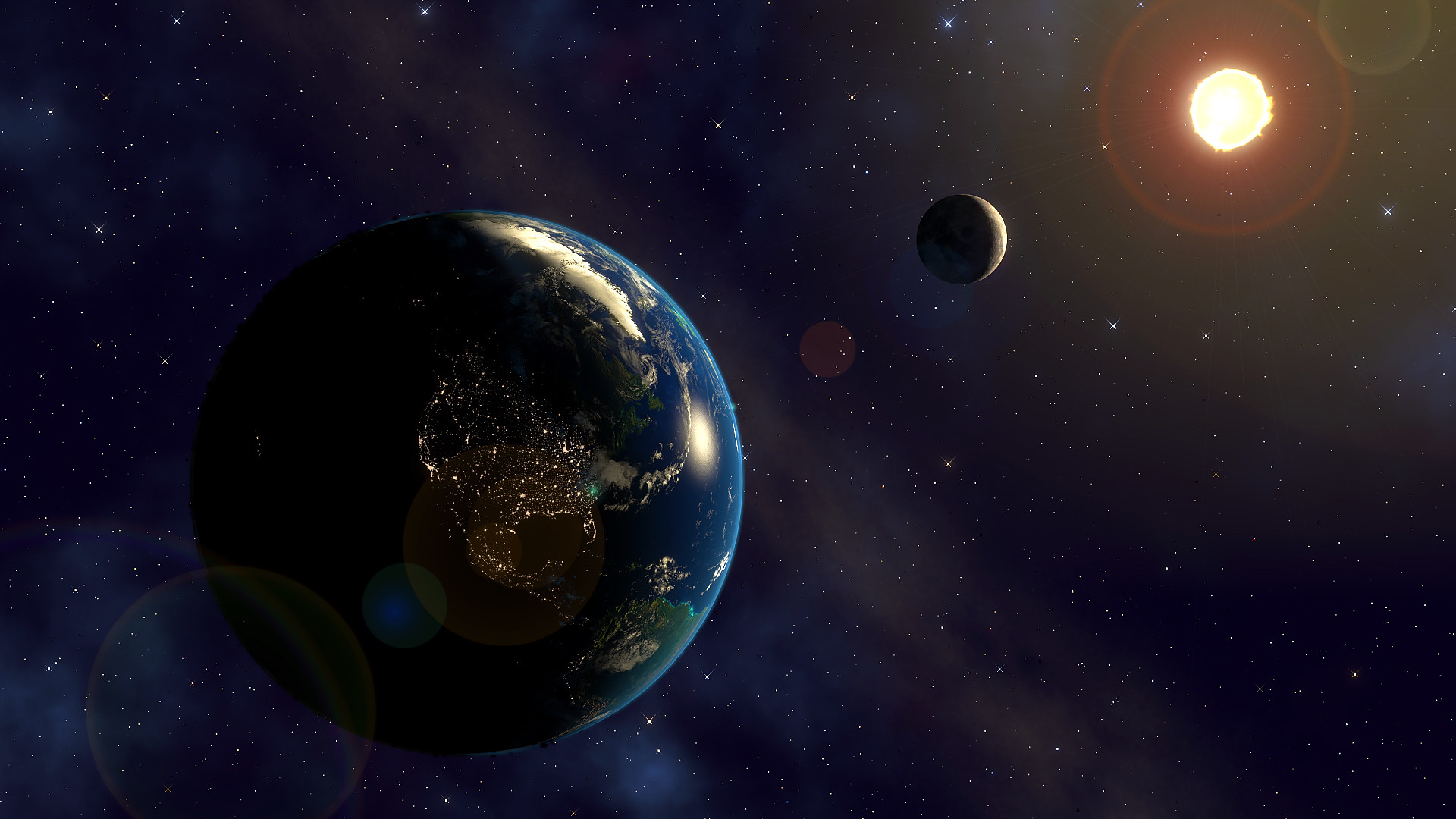
When the Moon passes directly between the Earth and the Sun, a solar eclipse occurs. Whether the eclipse is total or annular depends on whether the Moon’s angular diameter appears larger or smaller than the Sun’s as viewed from Earth’s surface. Only when the Moon’s angular diameter appears larger than the Sun’s are total solar eclipses possible. When the Earth is between the Sun and Moon, lunar eclipses can occur instead.
Credit: Kevin M. Gill/flickr
These five additional, profound lessons also arise.
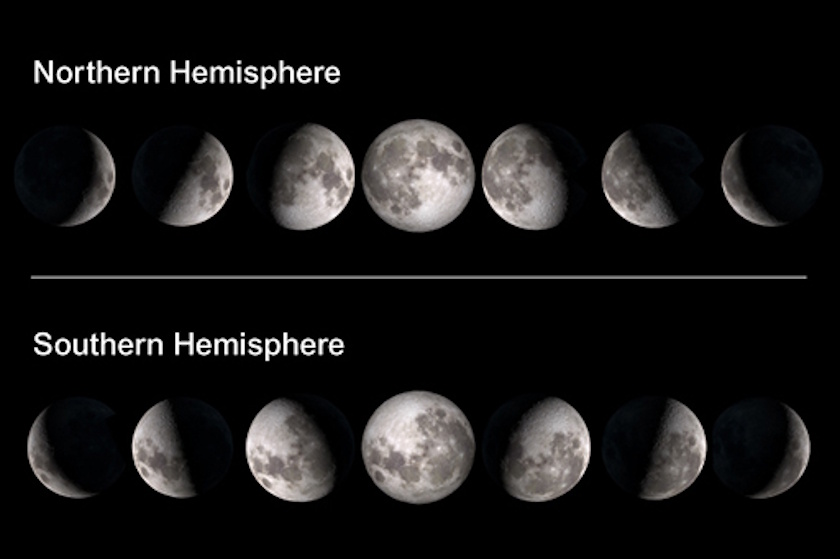
These two views show the Moon and its suite of phases (waxing crescent, first quarter, waxing gibbous, full, waning gibbous, last quarter, waning crescent) as viewed from both the Northern (top) and Southern (bottom) hemispheres. The perspectives of different observers at different latitudes ensures that the Moons will be tilted relative to both the horizon and the sky, dictated by the observer’s location and orientation with respect to Earth.
1.) The Earth is round, not flat.
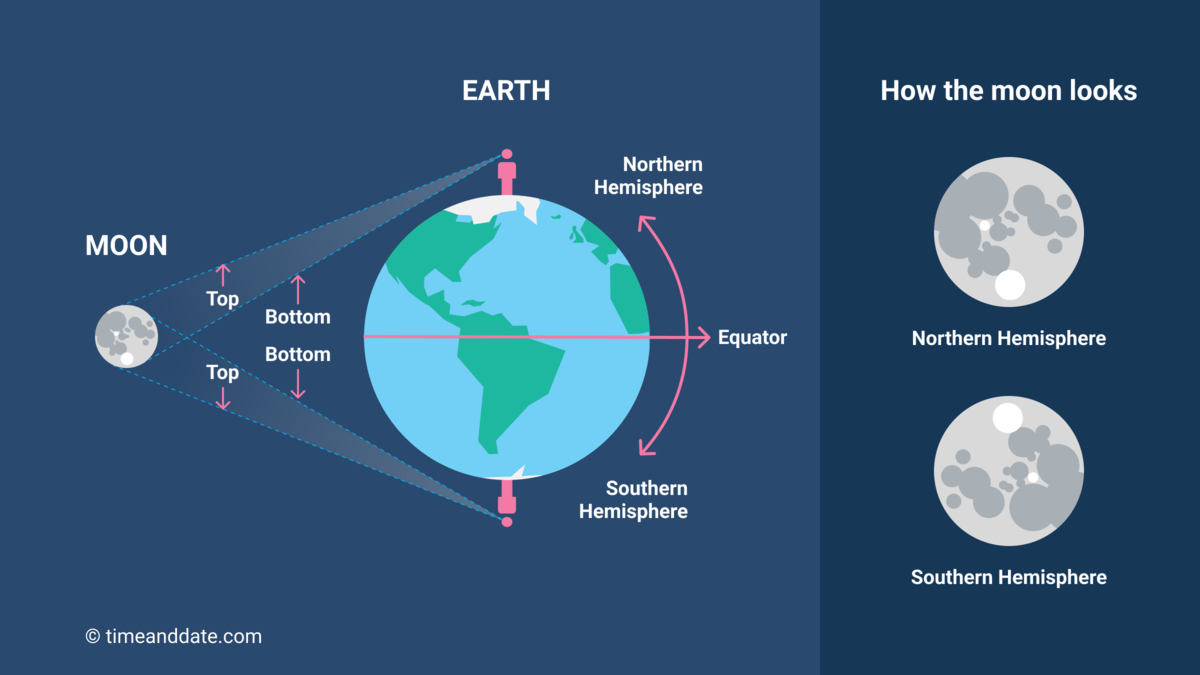
When observers from either the Northern or Southern hemispheres travel to the opposite hemisphere, they see the Moon as appearing “flipped” when compared to their usual views. This is not that the Moon is “the wrong side up” but rather that the Earth is round, and your perspective is what’s changed.
The Moon’s observed orientation is heavily latitude-dependent.
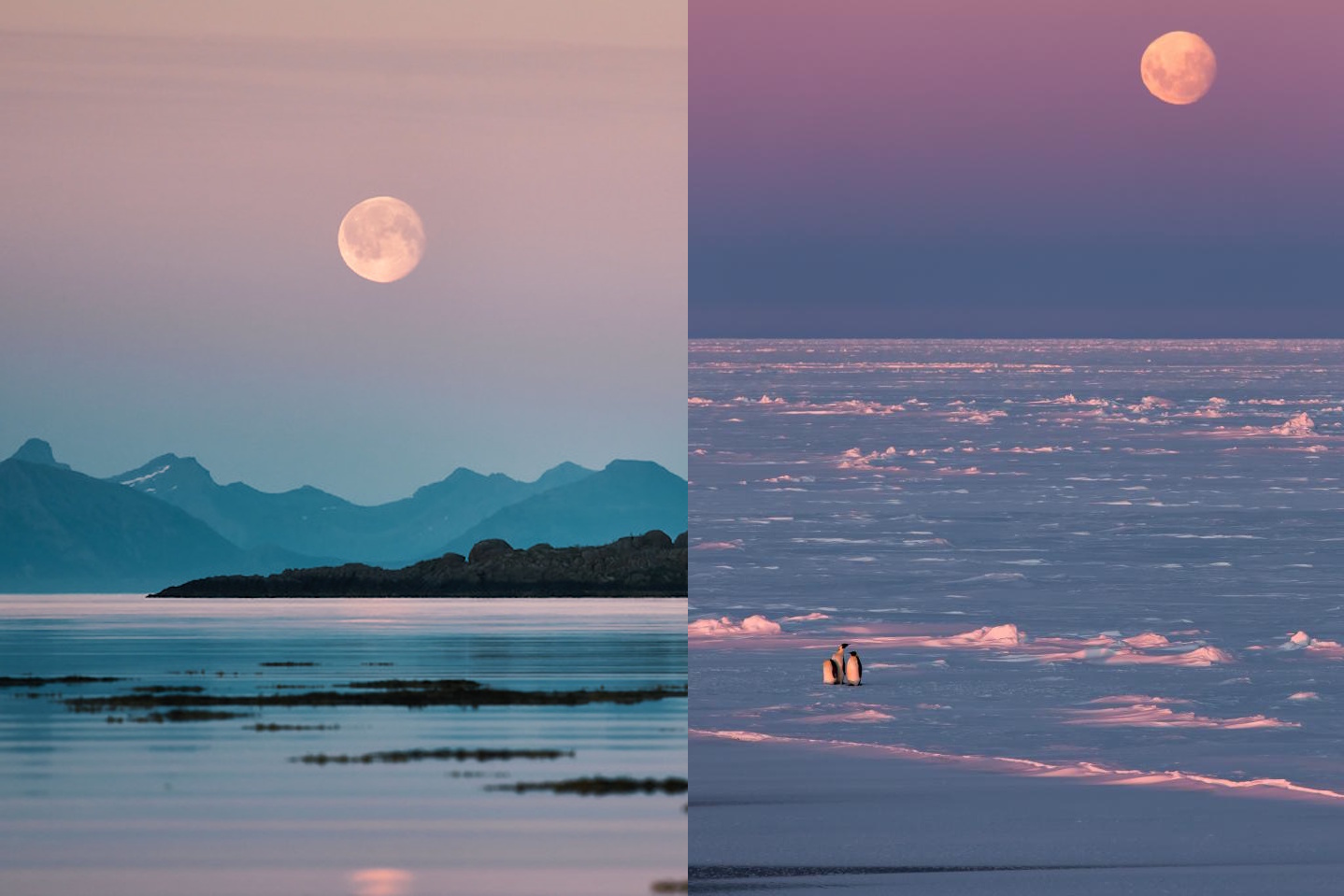
This side-by-side view shows two images of the Moon: one from Antarctica, at right, and one from Norway, at left. Note that the locations of the darkened lunar maria appear “flipped” between the two locations: evidence for a round, not a flat, Earth.
The Earth’s spheroidal shadow appears globally during lunar eclipses.
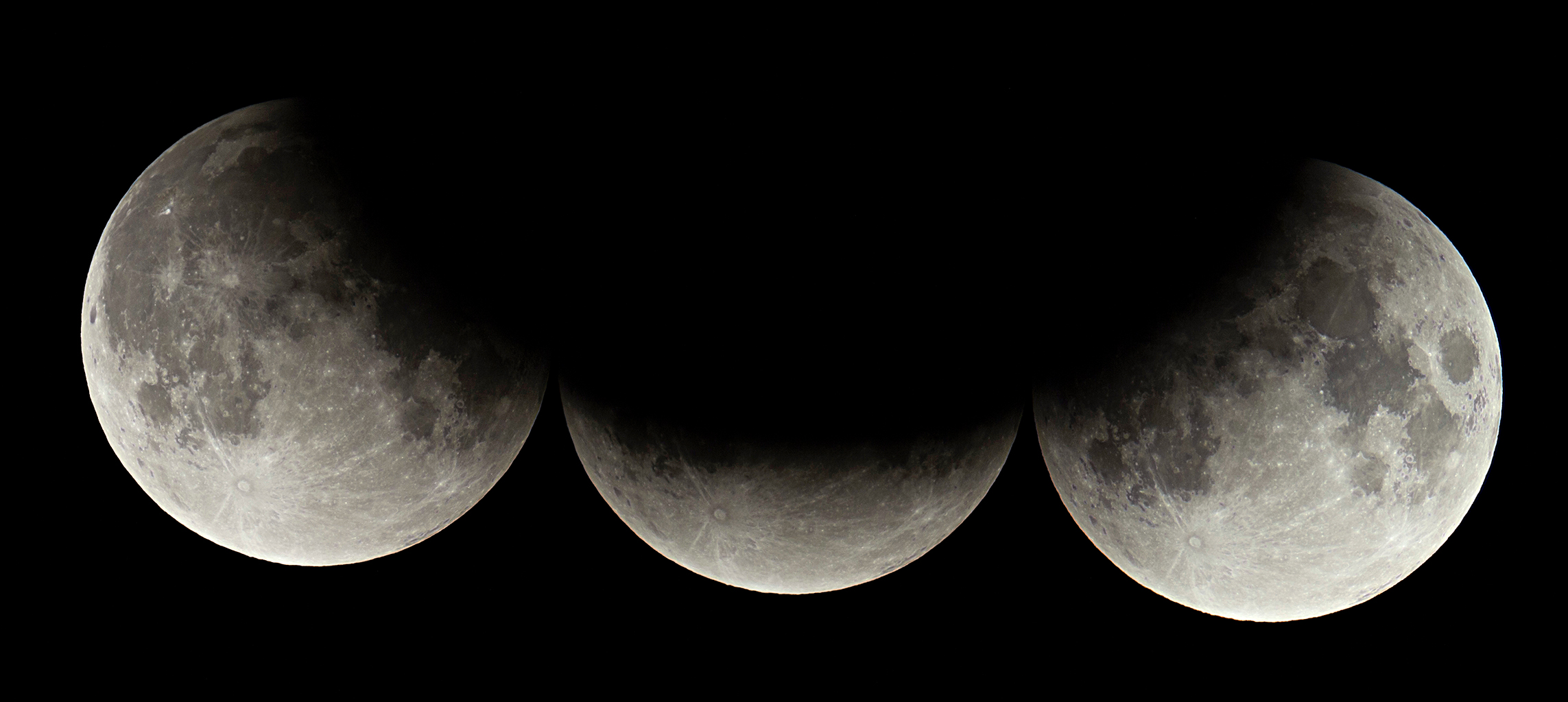
By looking at the curvature of the Earth’s shadow that falls on the Moon, we can reconstruct the relative size of the Moon versus the Earth’s shadow-cone, as well as the Earth’s overall shape. Using this data was the first method to geometrically reconstruct the Earth-Moon distance. The Earth’s shadow falling on the Moon teaches us that our planet is more than 3 but less than 4 times the diameter of the Moon, and spheroidal in shape.
Only a round Earth accommodates these observations.
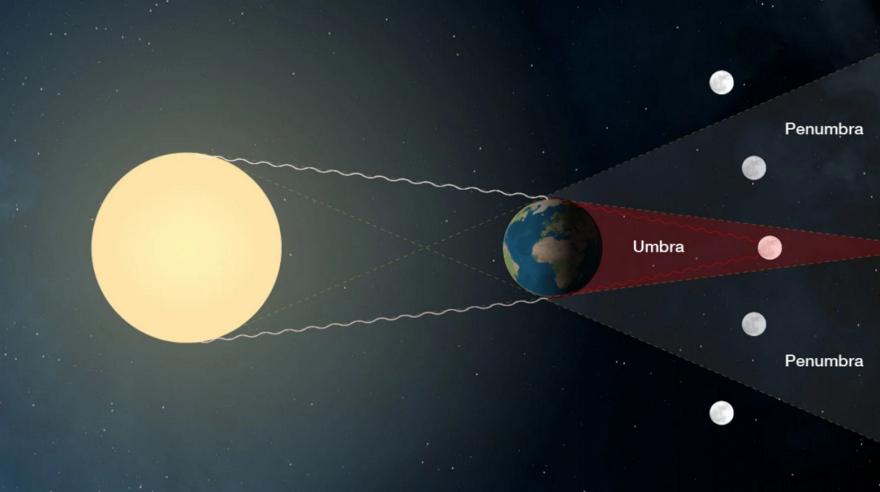
During a lunar eclipse, a spheroidal Earth casts a circular shadow from all perspectives and locations, partially obscuring the Moon when it is partially in the umbral shadow and fully obscuring (or reddening) it during totality. If the Earth were a flat disk, it would cast an oval-shaped shadow instead, conflicting with observations.
Credit: NASA
2.) The Moon’s orbit is elliptical, not circular.
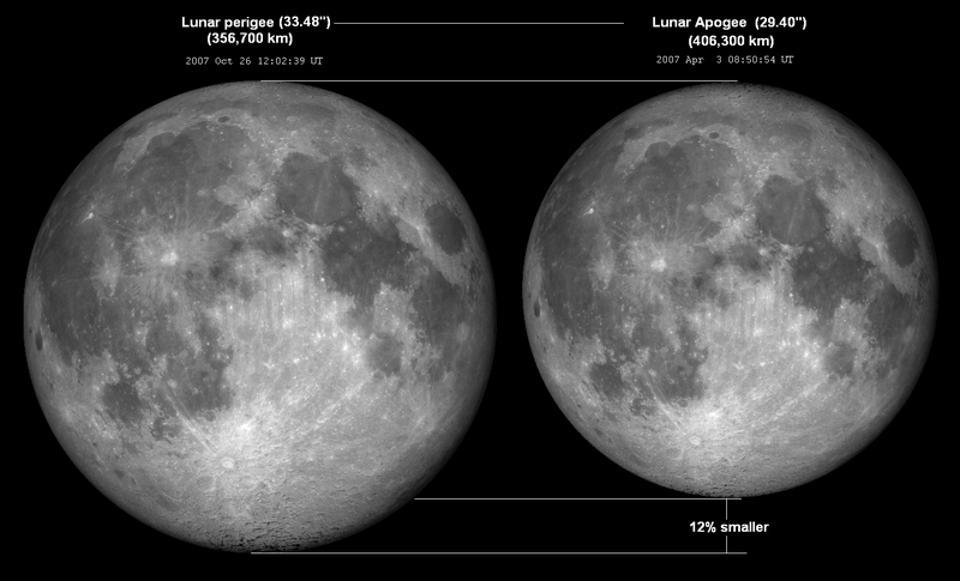
A perigee full Moon compared with an apogee full Moon, where the former is 14% larger and the latter is 12% smaller than the other. The longest lunar eclipses possible correspond to the smallest apogee full Moons of all. At apogee, the Moon is not only farther and appears smaller, but also moves at its slowest in its orbit around Earth, and takes the longest amount of time for am Earth-to-Moon round-trip signal to traverse that distance.
The Moon’s apparent size changes throughout its orbit.
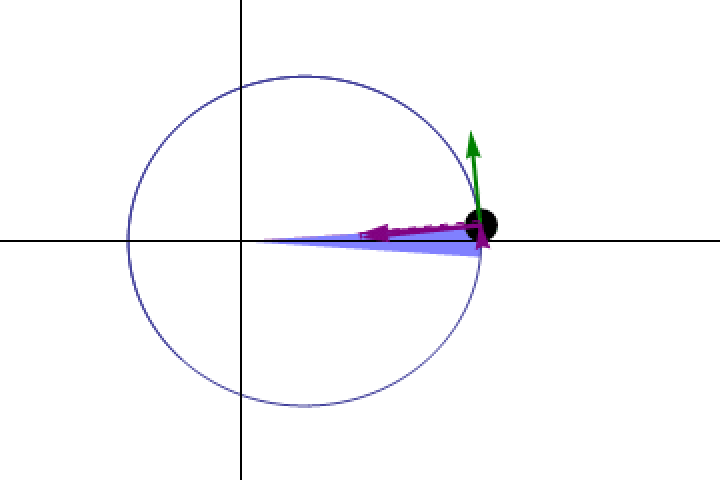
Even before we understood how the law of gravity worked, we were able to establish that any object in orbit around another obeyed Kepler’s second law: it traced out equal areas in equal amounts of time, indicating that it must move more slowly when it’s farther away and more quickly when it’s closer. This effect was clearly visible for the Moon since antiquity, as the smaller angular size and slower speed near apogee and the larger angular size and faster speed near perigee is evident.
Credit: Gonfer/Wikimedia Commons, using Mathematica
Over 50% of the lunar face is visible from Earth, due to orbital speed variations.
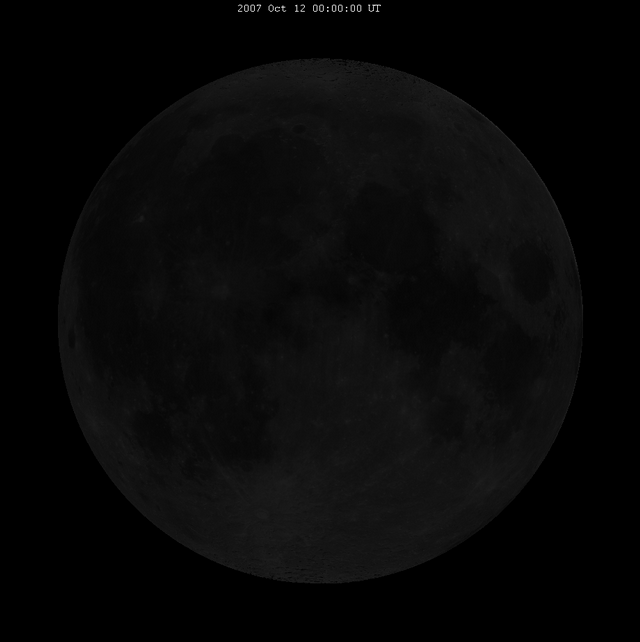
Although the Moon is tidally locked to the Earth so that the same side always faces our planet, the fact that the Moon’s orbit is elliptical and follows Kepler’s laws of motion ensures that it appears to rock back-and-forth while growing and shrinking in apparent size over the course of a month: a phenomenon known as lunar libration. Coupled with the Moon’s constant rate of rotation, 59% of the total lunar surface, not 50%, is visible from Earth over time.
Credit: Tomruen/Wikimedia Commons
This implies monthly changes in the Moon-Earth distance: disallowing circular orbits.
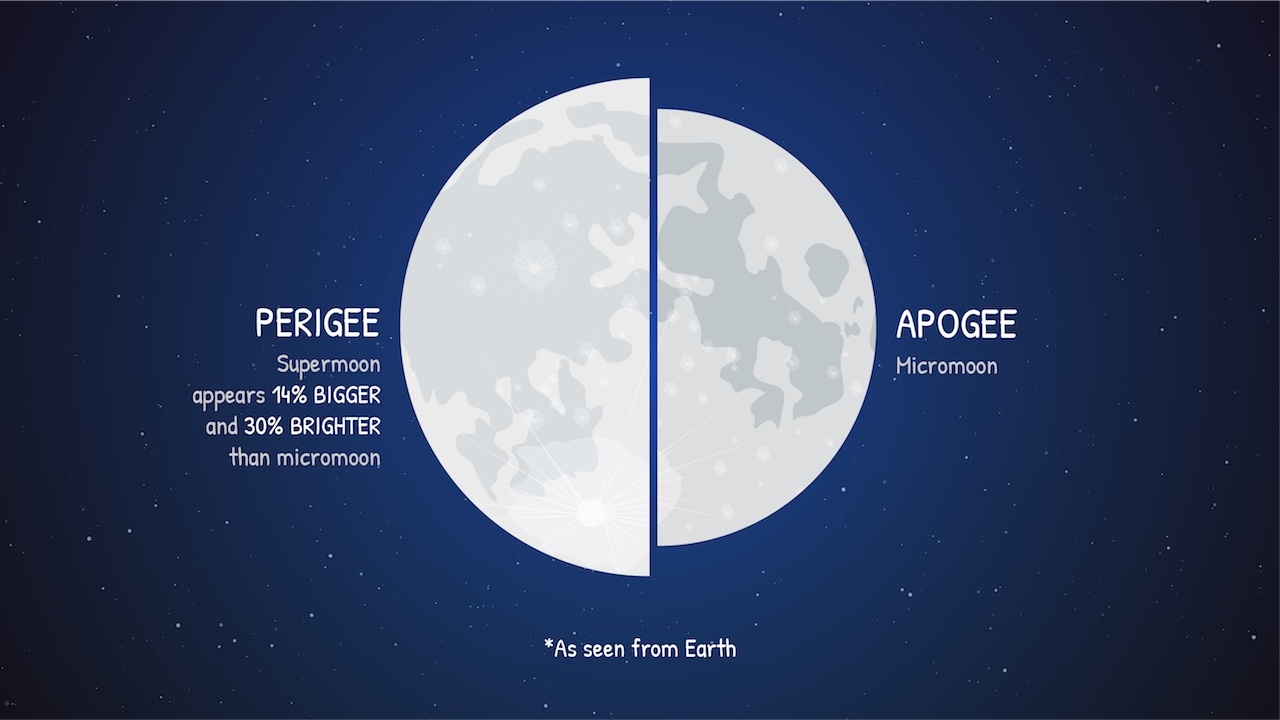
At its most distant from Earth, or apogee, the full Moon is known as a micromoon, the opposite of a (perigee) supermoon. A supermoon is 14% larger and 30% brighter than a micromoon, but micromoons move the slowest in orbit around Earth. These variations in lunar distance demonstrate that a circular orbit for the Moon is impossible, instead favoring Kepler’s notion of elliptical orbits.
Credit: NASA/JPL-Caltech
3.) It reveals the reflectivity of the Earth.
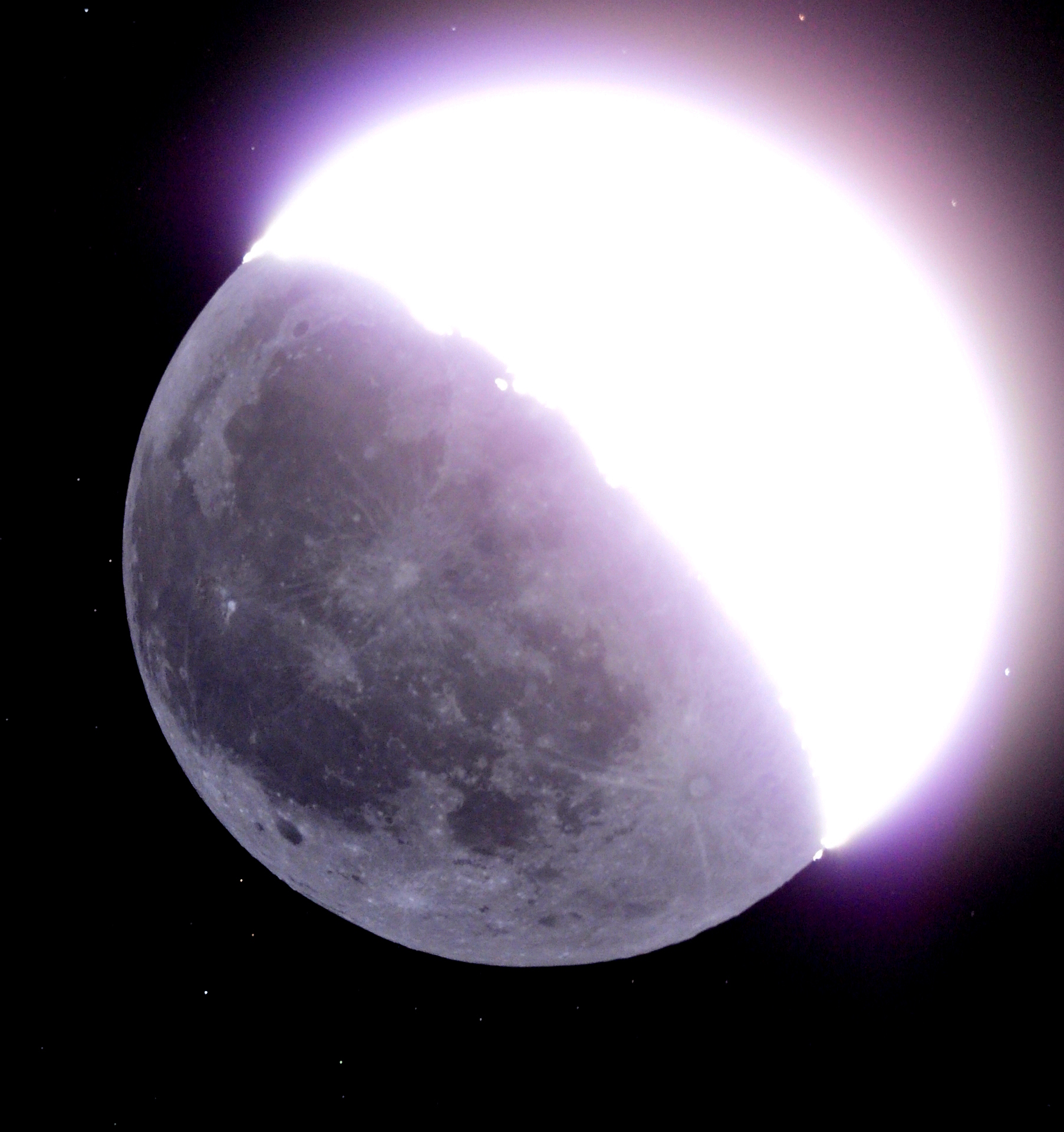
As seen from Earth, a less-than-full Moon will have a portion of its face illuminated by reflected sunshine, but the remainder of the Moon isn’t fully dark. Instead, it’s lit up by Earthshine: the reflected sunlight from Earth that falls on the Moon. In this image, the Sun-lit portion of the Moon is overexposed, revealing an enormous amount of detail on the Earth-lit side of the Moon.
The Sun only illuminates part of the Moon.
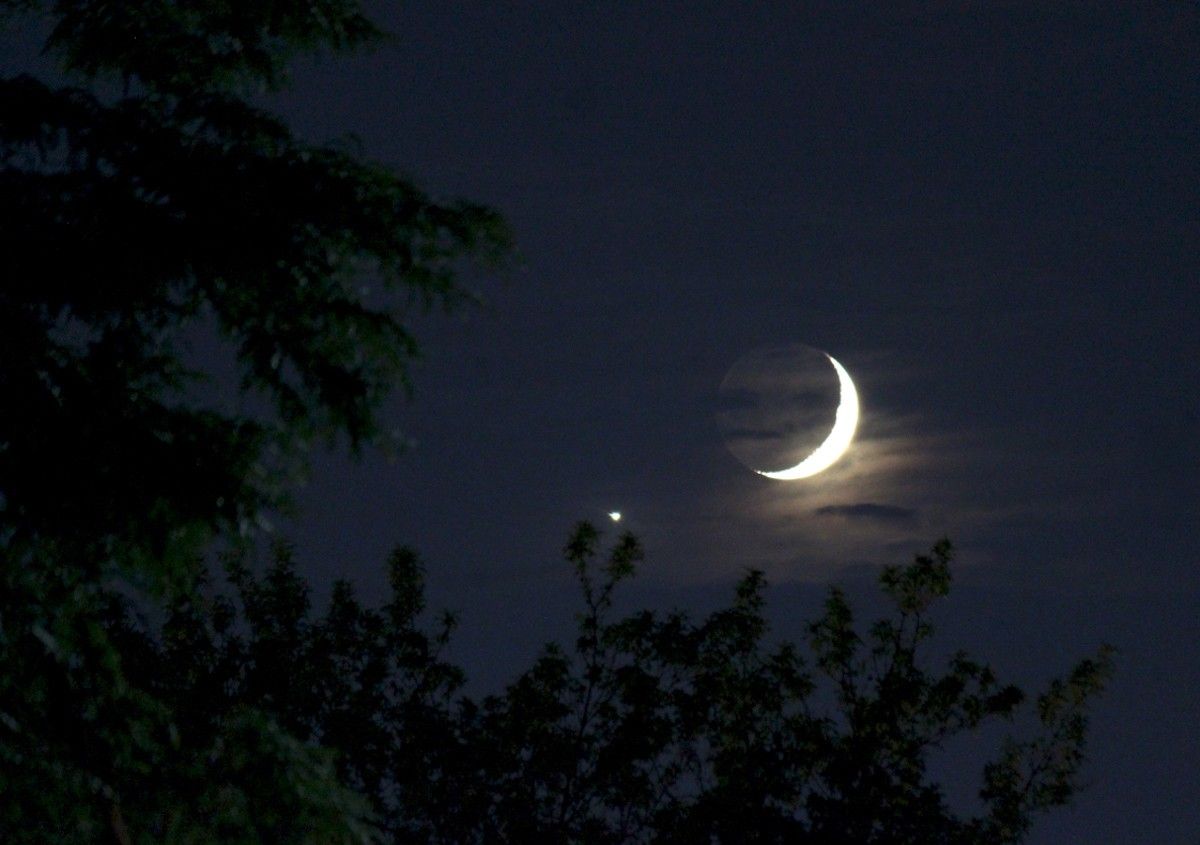
The brightness of the portion of the Moon not directly lit by the Sun, but instead illuminated by Earthshine, will change over time, dependent on how reflective the Earth is, which is dependent on a number of factors, including cloud cover, ice cover, the time of day and the Earth’s rotation, and even the seasons. The Sun-lit portion of the Moon vastly outshines the Earth-lit portion, but comparisons allow us to determine the reflectivity of the Earth.
Credit: NASA/Bill Dunford
The remainder is lit up by Earthshine: sunlight reflected off of Earth.
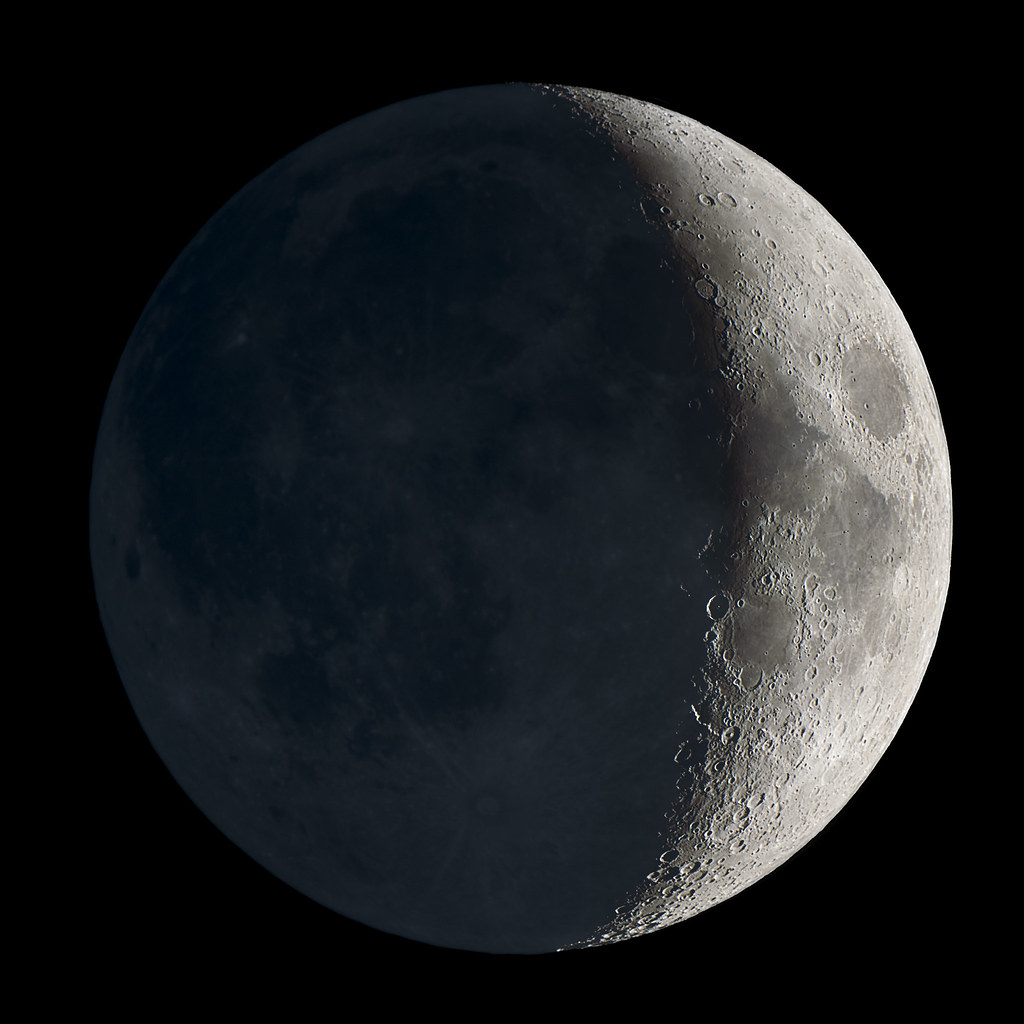
This amateur photograph shows a crescent Moon in detail: where a portion of the Moon is illuminated by the Sun, where craters are particularly visible along the terminator (the line between night-and-day), and the remainder of the Moon is dimly illuminated by reflected sunlight from Earth: Earthshine.
Observing the crescent Moon’s darkened portions reveals Earth’s reflectivity, or albedo.
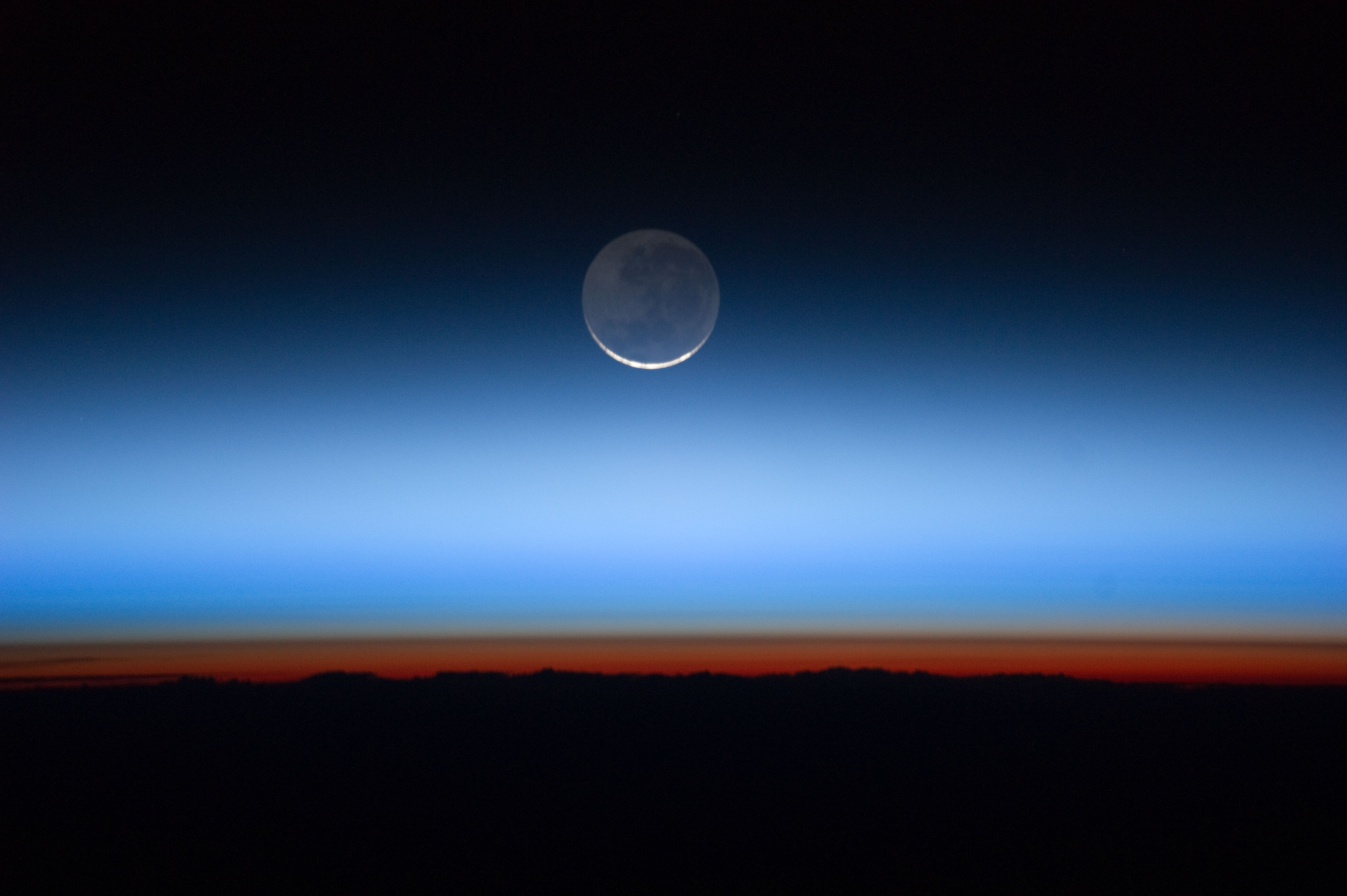
The Moon as seen from a view above the majority of Earth’s atmosphere. Earthshine illuminates the majority of the Moon, while only a sliver of a thin crescent is lit up by the Sun. The light from the Moon passes through the Earth’s atmosphere a little bit, with the atmospheric color slightly affecting the camera’s view. The orange color at the bottom is from Earth’s troposphere, while the higher blue color arises from scattered blue sunlight.
4.) Earth’s atmosphere transmits more red light than blue.
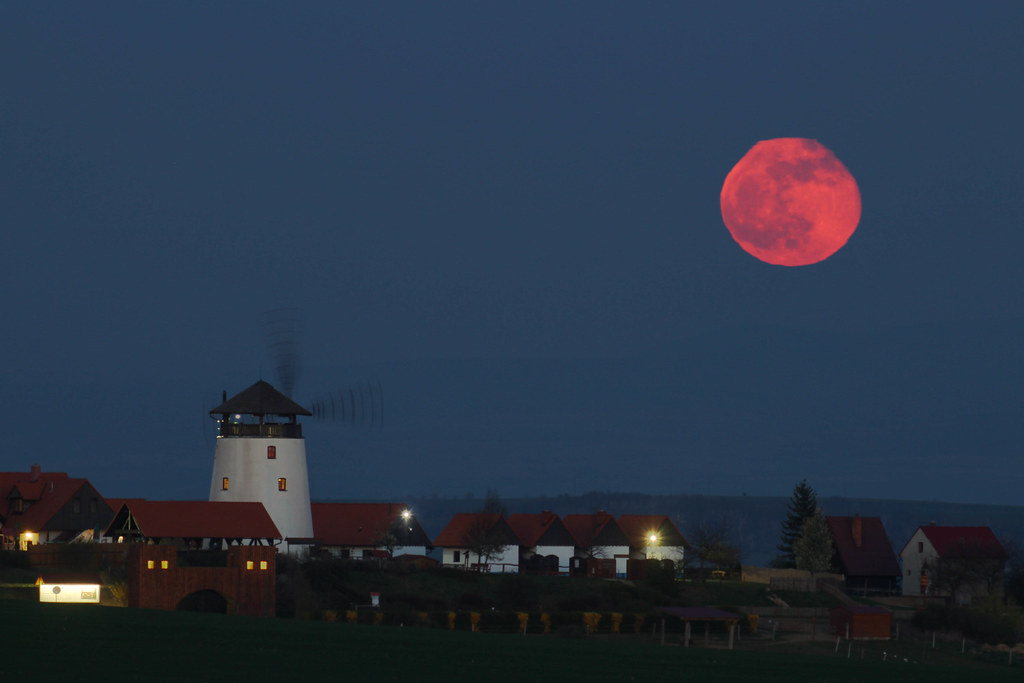
When observed very close to the horizon, light from the Moon must pass through a maximal amount of Earth’s atmosphere. The atmosphere preferentially scatters blue light away while allowing red light to pass through more easily, resulting in a redder and fainter appearance near the horizon.
During moonset/moonrise, the Moon appears reddened.
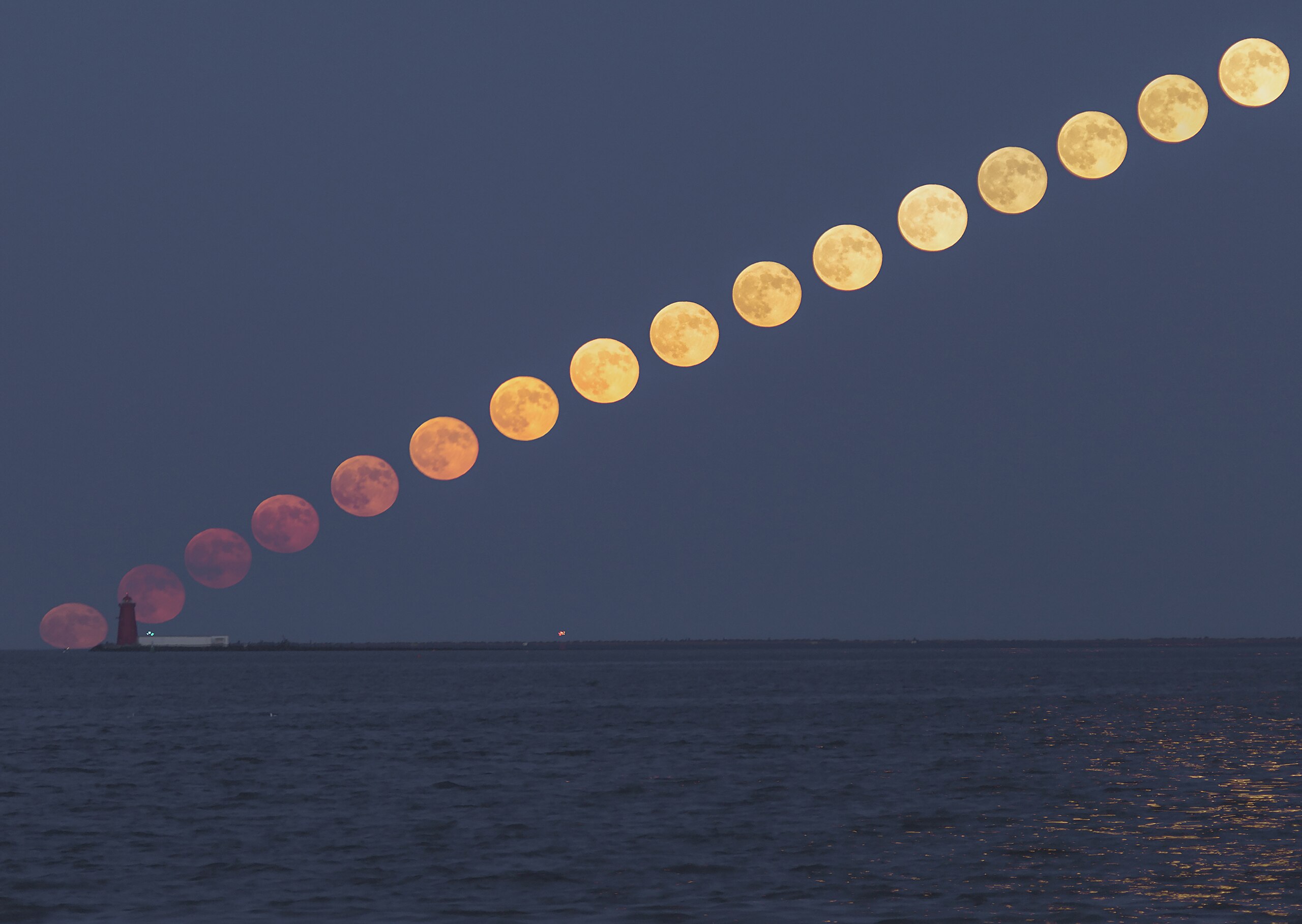
This stacked photograph shows a snapshot of the Moon as time elapses in three minute increments, allowing photographers to reveal differences in brightness and color as different amounts of blue light get scattered away due to the amount of Earth’s atmosphere that the light passes through.
Earth’s atmosphere preferentially scatters away bluer light.
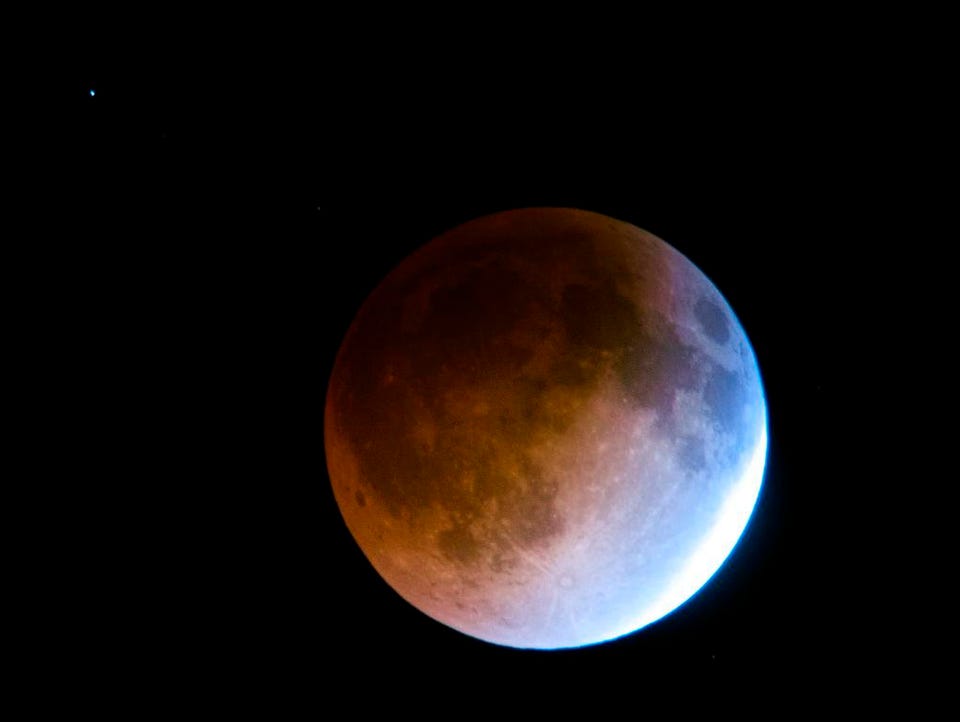
When near-totality is reached during a total lunar eclipse, such as the one that occurred on November 19, 2021, it’s possible to observe a blue band opposing the red side just outside of totality. This is colloquially known as the ‘Japanese Lantern’ effect, and arises due to the scattering of light of various wavelengths by Earth’s atmosphere.
Meanwhile, the transmitted red light illuminates a fully eclipsed lunar disk.
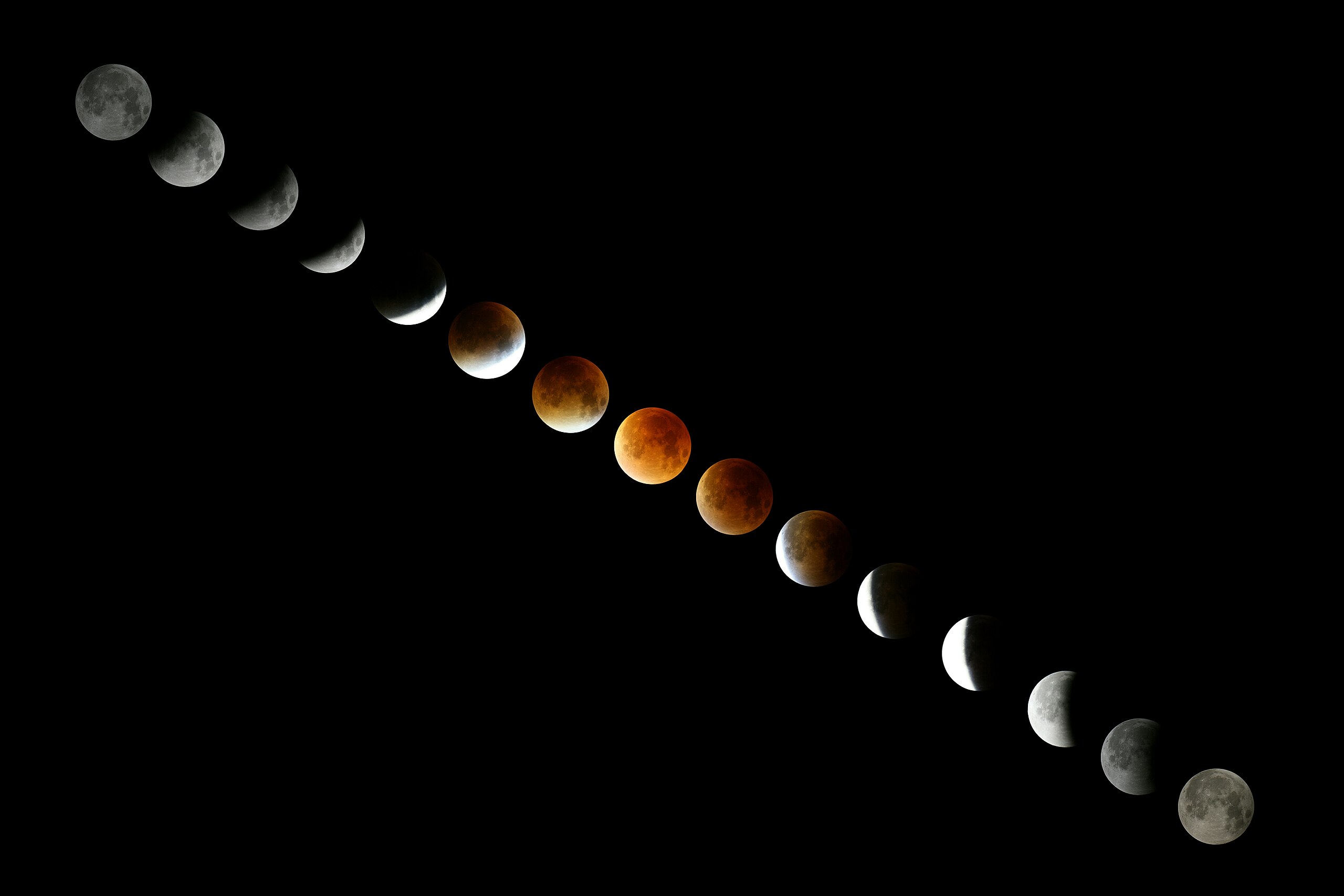
During most total lunar eclipses, a partial eclipse is followed by a dark red taking over the Moon from one side, with one limb always remaining brighter and whiter than the other. If the Moon passes through the direct center of the Earth’s shadow, it may appear to be uniformly red and dim, but more blue light will fall on the Moon the closer the side of the Moon is to the end of Earth’s shadow cone.
5.) The Moon has mountains, valleys, and high-rimmed craters.
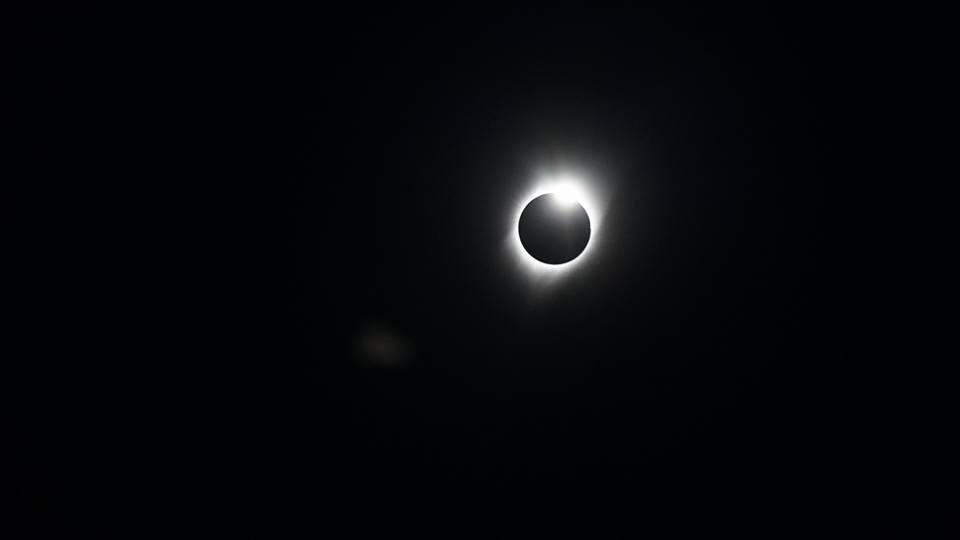
This photograph of the eclipsed Sun during totality shows the asymmetric corona and the last remnant of a tiny bit of sunlight poking through a crater on the Moon: one of Baily’s beads.
During solar eclipses, Baily’s beads arise.
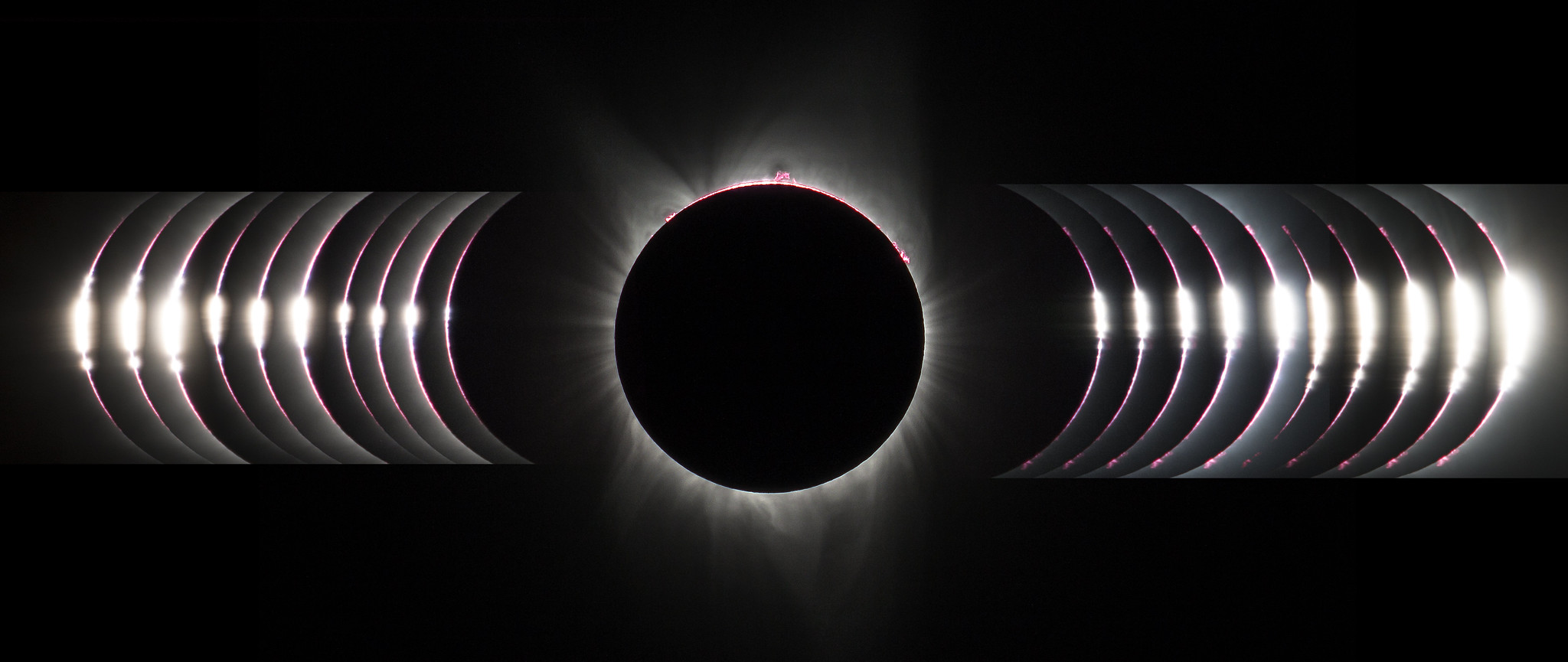
Just prior to and subsequent to totality, a series of points of sunlight known as Baily’s beads can be seen. This is unobscured, direct sunlight being partially blocked at the lunar limb by high crater walls. Baily’s beads, if magnified and looked at with the naked eye, can cause irreversible eye damage.
These “pockets” of sunlight showcase a complex lunar topography.
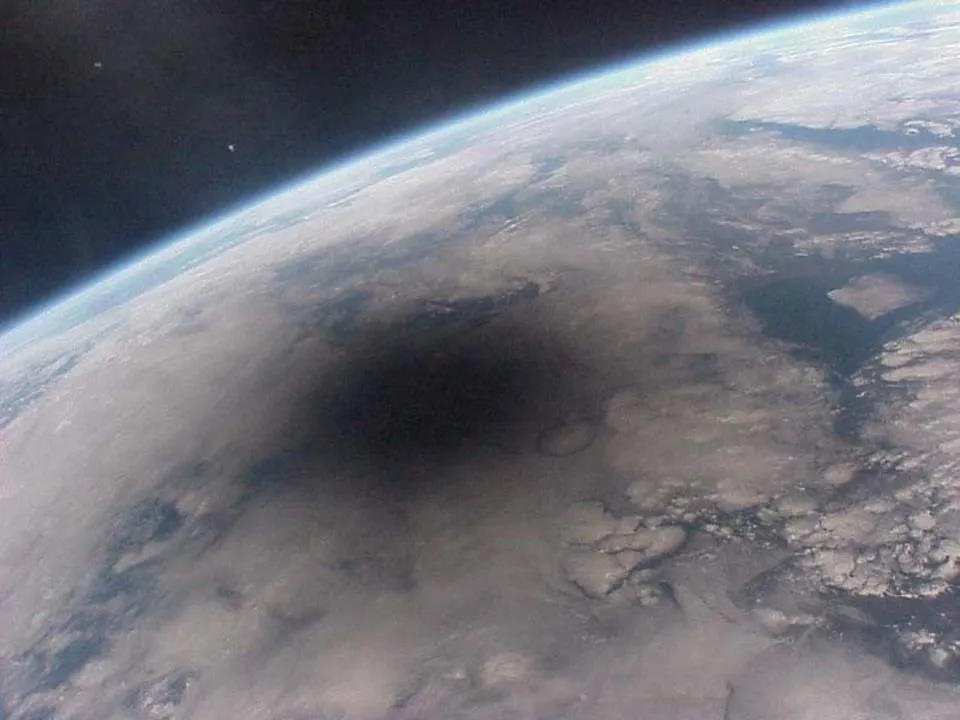
When the Moon’s shadow falls on the Earth, as it did during this 1999 total solar eclipse, its entire shadow can be seen from the right perspective. Contrary to the expectations of many, the Moon’s shadow won’t be perfectly spherical, but will be elongated and irregular due to geometric alignments and the cratered and mountainous terrain found on the Moon.
Credit: CNES/RSA, Mir, 1999
Additionally, the Moon’s irregularly shaped shadow reveals crater wall heights.
Mostly Mute Monday tells an astronomical story in images, visuals, and no more than 200 words.
Sign up for the Starts With a Bang newsletter
Travel the universe with Dr. Ethan Siegel as he answers the biggest questions of all.
